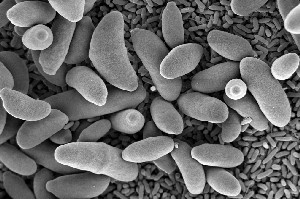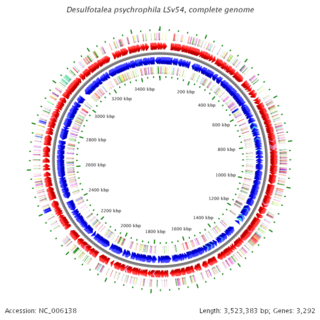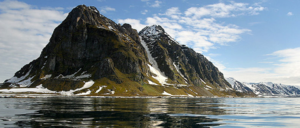|
|
| (57 intermediate revisions by one other user not shown) |
| Line 1: |
Line 1: |
| <!DOCTYPE html PUBLIC "-//W3C//DTD XHTML 1.0 Transitional//EN" "http://www.w3.org/TR/xhtml1/DTD/xhtml1-transitional.dtd">
| | {{Curated}} |
| <html xmlns="http://www.w3.org/1999/xhtml" xml:lang="en" lang="en" dir="ltr">
| | [[Image:Desulfotalea.PNG|frame|right|''D. psychrophila'' courtesy of [http://www.ncbi.nlm.nih.gov/sites/entrez?db=genomeprj&cmd=Retrieve&dopt=Overview&list_uids=12751 NCBI]]] |
| <head>
| |
| <meta http-equiv="Content-Type" content="text/html; charset=UTF-8" />
| |
| <meta name="keywords" content="Genus lennon" />
| |
| <link rel="shortcut icon" href="favicon.ico" />
| |
| <link rel="search" type="application/opensearchdescription+xml" href="/opensearch_desc.php" title="MicrobeWiki (English)" />
| |
| <link rel="alternate" type="application/rss+xml" title="MicrobeWiki RSS Feed" href="http://microbewiki.kenyon.edu/index.php?title=Special:Recentchanges&feed=rss" />
| |
| <link rel="alternate" type="application/atom+xml" title="MicrobeWiki Atom Feed" href="http://microbewiki.kenyon.edu/index.php?title=Special:Recentchanges&feed=atom" />
| |
| <title>Genus lennon - MicrobeWiki</title>
| |
|
| |
|
| <style type="text/css" media="screen,projection">/*<![CDATA[*/ @import "/skins/wikistyle/main.css?7"; /*]]>*/</style>
| |
| <link rel="stylesheet" type="text/css" media="print" href="/skins/common/commonPrint.css" />
| |
| <!--[if lt IE 5.5000]><style type="text/css">@import "/skins/wikistyle/IE50Fixes.css";</style><![endif]-->
| |
| <!--[if IE 5.5000]><style type="text/css">@import "/skins/wikistyle/IE55Fixes.css";</style><![endif]-->
| |
| <!--[if IE 6]><style type="text/css">@import "/skins/wikistyle/IE60Fixes.css";</style><![endif]-->
| |
| <!--[if IE 7]><style type="text/css">@import "/skins/wikistyle/IE70Fixes.css?1";</style><![endif]-->
| |
| <!--[if lt IE 7]><script type="text/javascript" src="/skins/common/IEFixes.js"></script>
| |
| <meta http-equiv="imagetoolbar" content="no" /><![endif]-->
| |
| <script type="text/javascript">var skin = 'wikistyle';var stylepath = '/skins';</script>
| |
|
| |
|
| <script type="text/javascript" src="/skins/common/wikibits.js"><!-- wikibits js --></script>
| | ==Classification== |
| <script type="text/javascript" src="/index.php?title=-&action=raw&smaxage=0&gen=js&useskin=wikistyle"><!-- site js --></script>
| |
| <style type="text/css">/*<![CDATA[*/
| |
| @import "/index.php?title=MediaWiki:Common.css&usemsgcache=yes&action=raw&ctype=text/css&smaxage=18000";
| |
| @import "/index.php?title=MediaWiki:Wikistyle.css&usemsgcache=yes&action=raw&ctype=text/css&smaxage=18000";
| |
| @import "/index.php?title=-&action=raw&gen=css&maxage=18000&smaxage=0";
| |
| /*]]>*/</style>
| |
| <!-- Head Scripts -->
| |
| <script type="text/javascript" src="/skins/common/ajax.js?116"></script>
| |
| <script type="text/javascript" src="/skins/common/ajaxwatch.js?116"></script>
| |
|
| |
|
| </head>
| | Bacteria; Proteobacteria; Deltaproteobacteria; Desulfobacterales; Desulfobulbaceae |
| <body class="ns-0 ltr">
| |
| <div id="globalWrapper">
| |
| <div id="column-content">
| |
| <div id="content">
| |
| <a name="top" id="top"></a>
| |
| <h1 class="firstHeading">Genus lennon</h1>
| |
| <div id="bodyContent">
| |
| <h3 id="siteSub">From MicrobeWiki, the student-edited microbiology resource</h3>
| |
|
| |
|
| <div id="contentSub"></div>
| |
| <div id="jump-to-nav">Jump to: <a href="#column-one">navigation</a>, <a href="#searchInput">search</a></div> <!-- start content -->
| |
| <table id="toc" class="toc" summary="Contents"><tr><td><div id="toctitle"><h2>Contents</h2></div>
| |
| <ul>
| |
| <li class="toclevel-1"><a href="#Classification"><span class="tocnumber">1</span> <span class="toctext">Classification</span></a>
| |
|
| |
|
| <ul>
| |
| <li class="toclevel-2"><a href="#Species"><span class="tocnumber">1.1</span> <span class="toctext">Species</span></a></li>
| |
| </ul>
| |
| </li>
| |
| <li class="toclevel-1"><a href="#Description_and_Significance"><span class="tocnumber">2</span> <span class="toctext">Description and Significance</span></a></li>
| |
| <li class="toclevel-1"><a href="#Genome_Structure"><span class="tocnumber">3</span> <span class="toctext">Genome Structure</span></a></li>
| |
| <li class="toclevel-1"><a href="#Cell_Structure.2C_Metabolism_and_Life_Cycle"><span class="tocnumber">4</span> <span class="toctext">Cell Structure, Metabolism and Life Cycle</span></a></li>
| |
|
| |
|
| <li class="toclevel-1"><a href="#Ecology_and_Pathogenesis"><span class="tocnumber">5</span> <span class="toctext">Ecology and Pathogenesis</span></a></li>
| | ===Species=== |
| <li class="toclevel-1"><a href="#References"><span class="tocnumber">6</span> <span class="toctext">References</span></a></li>
| |
| <li class="toclevel-1"><a href="#Author"><span class="tocnumber">7</span> <span class="toctext">Author</span></a></li>
| |
| </ul>
| |
| </td></tr></table><script type="text/javascript"> if (window.showTocToggle) { var tocShowText = "show"; var tocHideText = "hide"; showTocToggle(); } </script>
| |
| <a name="Classification"></a><h2> <span class="mw-headline">Classification</span></h2>
| |
|
| |
|
| <p>Domain; Phylum; Class; Order; family [Others may be used. Use <a href="http://www.ncbi.nlm.nih.gov/Taxonomy/" class="external text" title="http://www.ncbi.nlm.nih.gov/Taxonomy/" rel="nofollow">NCBI</a> link to find]
| | {| |
| </p>
| | | height="10" bgcolor="#FFDF95" | |
| <a name="Species"></a><h3> <span class="mw-headline">Species</span></h3>
| | '''NCBI: [http://www.ncbi.nlm.nih.gov/Taxonomy/Browser/wwwtax.cgi?mode=Info&id=84980&lvl=3&lin=f&keep=1&srchmode=1&unlock Taxonomy]''' |
| <table>
| | |} |
| <tr>
| |
| <td height="10" bgcolor="#FFDF95">
| |
| <p><b>NCBI: <a href="http://www.ncbi.nlm.nih.gov/Taxonomy/Browser/wwwtax.cgi?mode=Tree&id=2&lvl=3&lin=f&keep=1&srchmode=1&unlock" class="external text" title="http://www.ncbi.nlm.nih.gov/Taxonomy/Browser/wwwtax.cgi?mode=Tree&id=2&lvl=3&lin=f&keep=1&srchmode=1&unlock" rel="nofollow">Taxonomy</a></b>
| |
| </p>
| |
| </td></tr></table>
| |
| <p><i>Genus species</i>
| |
|
| |
|
| </p>
| | ''Desulfotalea psychrophila'' |
| <a name="Description_and_Significance"></a><h2> <span class="mw-headline">Description and Significance</span></h2>
| |
| <p>Describe the appearance, habitat, etc. of the organism, and why you think it is important.
| |
| </p>
| |
| <a name="Genome_Structure"></a><h2> <span class="mw-headline">Genome Structure</span></h2>
| |
| <p>Describe the size and content of the genome. How many chromosomes? Circular or linear? Other interesting features? What is known about its sequence?
| |
| </p><p><br />
| |
| </p>
| |
| <a name="Cell_Structure.2C_Metabolism_and_Life_Cycle"></a><h2> <span class="mw-headline">Cell Structure, Metabolism and Life Cycle</span></h2>
| |
| <p>Interesting features of cell structure; how it gains energy; what important molecules it produces.
| |
| </p><p><br />
| |
|
| |
|
| </p>
| | ==Description and Significance== |
| <a name="Ecology_and_Pathogenesis"></a><h2> <span class="mw-headline">Ecology and Pathogenesis</span></h2>
| |
| <p>Habitat; symbiosis; biogeochemical significance; contributions to environment.<br />
| |
| If relevant, how does this organism cause disease? Human, animal, plant hosts? Virulence factors, as well as patient symptoms.<br /><br />
| |
| </p>
| |
| <a name="References"></a><h2> <span class="mw-headline">References</span></h2>
| |
| <p>[Sample reference] <a href="http://ijs.sgmjournals.org/cgi/reprint/50/2/489" class="external text" title="http://ijs.sgmjournals.org/cgi/reprint/50/2/489" rel="nofollow">Takai, K., Sugai, A., Itoh, T., and Horikoshi, K. "<i>Palaeococcus ferrophilus</i> gen. nov., sp. nov., a barophilic, hyperthermophilic archaeon from a deep-sea hydrothermal vent chimney". <i>International Journal of Systematic and Evolutionary Microbiology</i>. 2000. Volume 50. p. 489-500.</a>
| |
|
| |
|
| </p>
| | [[Image:Svalbard.png|thumb|300px|right|''Svalbard'']] |
| <a name="Author"></a><h2> <span class="mw-headline">Author</span></h2>
| |
| <p>Page authored by _____, student of <a href="http://www.kbs.msu.edu/faculty/lennon/" class="external text" title="http://www.kbs.msu.edu/faculty/lennon/" rel="nofollow">Prof. Jay Lennon</a> at Michigan State University.
| |
| </p>
| |
| <!--
| |
| NewPP limit report
| |
| Preprocessor node count: 12/1000000
| |
| Post-expand include size: 0/2097152 bytes
| |
| Template argument size: 0/2097152 bytes
| |
| -->
| |
|
| |
|
| <!-- Saved in parser cache with key biorealmdb-microbe:pcache:idhash:3545-0!1!0!!en!2!edit=0 and timestamp 20090425191044 -->
| | Desulfotalea psychrophila is a gram-negative sulfate-reducing proteobacterium that is rodular in shape. It is a delta-proteobacterium marine organism which can be found in marine sediments that are permanently cold. This organism was first discovered in arctic marine sediment off the coast of Svalbard. Desulfotalea psychrophila can withstand extremely cold temperatures and can even survive in waters below 0°C. <br><br>The organism does not form spores, and has a respiratory and a fermentative type of metabolism. Desulfotalea psychrophila is chemoorganotrophic, but has very little in common with other sulfate-reducing bacteria. The bacterium is strictly anaerobic, meaning it does not require oxygen to function. A electron-micrograph photo taken of the bacteria with an electron microscope reveals that D. psychrophila is rod-shaped in appearance, and some cells are sligtly curved. The organism breaks down sulfur as suggested by its name. <br><br> D. psychrophila is believed to play an important role in energy cycles, as it is an abundant member of the microbial community. The bacterium plays an important role in energy cycles by contributing to global carbon and sulfur cycles. The organism functions at an increased rate in colder waters, which could mean the species may be threatened by the rising temperatures of water as global warming is becoming more prevalent. |
| <div class="printfooter"> | |
| Retrieved from "<a href="http://microbewiki.kenyon.edu/index.php/Genus_lennon">http://microbewiki.kenyon.edu/index.php/Genus_lennon</a>"</div>
| |
|
| |
|
| <!-- end content -->
| | ==Genome Structure== |
| <div class="visualClear"></div>
| |
| </div>
| |
| </div>
| |
| </div>
| |
| <div id="column-one">
| |
| <div id="p-cactions" class="portlet">
| |
| <h5>Views</h5>
| |
|
| |
|
| <ul>
| | [[Image:Chromo_genome_desulfo.png|thumb|320px|left|''Chromosomal Genome of D. psychrophila,'' Courtesy of [http://wishart.biology.ualberta.ca/BacMap/graphs_cgview.html BacMap]]] |
| <li id="ca-nstab-main" class="selected"><a href="/index.php/Genus_lennon">Page</a></li>
| |
| <li id="ca-talk" class="new"><a href="/index.php?title=Talk:Genus_lennon&action=edit">Discussion</a></li>
| |
| <li id="ca-viewsource"><a href="/index.php?title=Genus_lennon&action=edit">View source</a></li>
| |
| <li id="ca-history"><a href="/index.php?title=Genus_lennon&action=history">History</a></li>
| |
| <li id="ca-watch"><a href="/index.php?title=Genus_lennon&action=watch">Watch</a></li>
| |
|
| |
|
| </ul>
| | The genome of Desulfotalea psychrophila strain LSv54 is one circular chromosome 3.523 million base pairs in length. The chromosome consists of two plasmids, 121 586 bp and 14 663 bp in length, along with 3118 predicted genes. D. psychrophila's genome was the first sequenced of any psychrophillic bacterium in 2004. Genome sequencing shows that Desulfotalea psychrophila is unique in that the microbe lacks homologues of several c-type cytochromes that are present in most sulfate-reducing lineages of the delta-proteobacteria. |
| </div>
| |
| <div class="portlet" id="p-personal">
| |
| <h5>Personal tools</h5>
| |
| <div class="pBody">
| |
| <ul>
| |
| <li id="pt-userpage"><a href="/index.php/User:Matthes2">Matthes2</a></li>
| |
| <li id="pt-mytalk"><a href="/index.php/User_talk:Matthes2">My talk</a></li>
| |
|
| |
|
| <li id="pt-preferences"><a href="/index.php/Special:Preferences">My preferences</a></li>
| | ==Cell Structure, Metabolism and Life Cycle== |
| <li id="pt-watchlist"><a href="/index.php/Special:Watchlist">My watchlist</a></li>
| |
| <li id="pt-mycontris"><a href="/index.php/Special:Contributions/Matthes2">My contributions</a></li>
| |
| <li id="pt-logout"><a href="/index.php?title=Special:Userlogout&returnto=Genus_lennon">Log out</a></li>
| |
| </ul>
| |
| </div>
| |
| </div>
| |
|
| |
|
| <div class="portlet" id="p-logo">
| | Desulfotalea psychrophila has one polar flagella surrounded by a double membrane. The cells are large rods and vary in length, usually between 0.6 and 0.7 micrometers. The bacteria are chemoorganotrophs. Desulfotalea psychrophila has a respiratory and fermentative type of metabolism. The organism uses carboxylic acids, formate, alcohols, and amino acids as both carbon sources and electron donors. Sulfate, sulfite, thiosulfate , and ferric citrate are terminal electron acceptors and D. psychrophila reduces these to sulfide and ferrous citrate. Acetate is produced because of incomplete oxidation. Energy is obtained most effectively at temperatures between 10.0 and 18.0°C, however, the anaerobe is still able to grow in saltwater at temperatures as low as -1.8°C. The bacteria do not require vitamins for growth. The organism requires sodium chloride (10 g/L) and magnesium chloride for optimal growth. |
| <a style="background-image: url(/skins/common/images/wiki.png);" href="/index.php/MicrobeWiki" title="MicrobeWiki"></a>
| |
| </div>
| |
| <script type="text/javascript"> if (window.isMSIE55) fixalpha(); </script>
| |
| <div class='portlet' id='p-Navigation'>
| |
| <h5>Navigation</h5>
| |
| <div class='pBody'>
| |
| <ul>
| |
|
| |
|
| <li id="n-MicrobeWiki-Home"><a href="/index.php/MicrobeWiki">MicrobeWiki Home</a></li>
| | ==Ecology and Pathogenesis== |
| <li id="n-Microbial-Biorealm"><a href="/index.php/Microbial_Biorealm">Microbial Biorealm</a></li>
| |
| <li id="n-Viral-Biorealm"><a href="/index.php/Viral_Biorealm">Viral Biorealm</a></li>
| |
| <li id="n-Taxonomy-Index"><a href="/index.php/Taxonomy_Index">Taxonomy Index</a></li>
| |
| <li id="n-Microbial-World-News"><a href="/index.php/Microbial_World_News">Microbial World News</a></li>
| |
| <li id="n-Microbial-Mythology"><a href="/index.php/Microbial_Mythology">Microbial Mythology</a></li>
| |
|
| |
|
| <li id="n-recentchanges"><a href="/index.php/Special:Recentchanges">Recent changes</a></li>
| |
| <li id="n-randompage"><a href="/index.php/Special:Random">Random page</a></li>
| |
| <li id="n-Contact-MicrobeWiki"><a href="/index.php/Contact_MicrobeWiki">Contact MicrobeWiki</a></li>
| |
| <li id="n-help"><a href="/index.php/Help:Contents">Help</a></li>
| |
| </ul>
| |
| </div>
| |
| </div>
| |
|
| |
|
| <div id="p-search" class="portlet">
| | D. psychrophila is found in arctic marine sediments at permanently cold temperatures. Optimal growth occurs in temperatures between 10°C and 18°C and in pH levels between 7.2 and 7.9. Desulfotalea psychrophila requires magnesium chloride and sodium chloride for growth, and optimal growth occurs in at brackish or marine salt concentrations. |
| <h5><label for="searchInput">Search</label></h5>
| |
| <div id="searchBody" class="pBody">
| |
| <form action="/index.php/Special:Search" id="searchform"><div>
| |
| <input id="searchInput" name="search" type="text" accesskey="f" value="" />
| |
| <input type='submit' name="go" class="searchButton" id="searchGoButton" value="Go" />
| |
| <input type='submit' name="fulltext" class="searchButton" value="Search" />
| |
| </div></form>
| |
|
| |
|
| </div>
| | The species has biogeochemical significance in that it plays roles in the carbon and sulfur biogeochemical cycles. The bacteria may have contributions to the environment because the organism could be a major player in the prevention of global warming. |
| </div>
| |
| <div class="portlet" id="p-tb">
| |
| <h5>Toolbox</h5>
| |
| <div class="pBody">
| |
| <ul>
| |
| <li id="t-whatlinkshere"><a href="/index.php/Special:Whatlinkshere/Genus_lennon">What links here</a></li>
| |
| <li id="t-recentchangeslinked"><a href="/index.php/Special:Recentchangeslinked/Genus_lennon">Related changes</a></li>
| |
|
| |
|
| <li id="t-upload"><a href="/index.php/Special:Upload">Upload file</a></li>
| | ==References== |
| <li id="t-specialpages"><a href="/index.php/Special:Specialpages">Special pages</a></li>
| | [http://www.genome.jp/kegg-bin/show_organism?menu_type=pathway_maps&org=dps] 'KEGG Genome: Desulfotalea psychrophila', Kyoto Encyclopedia of Genes and Genomes. Desulfotalea psychrophila. 2004. |
| <li id="t-print"><a href="/index.php?title=Genus_lennon&printable=yes">Printable version</a></li> <li id="t-permalink"><a href="/index.php?title=Genus_lennon&oldid=27204">Permanent link</a></li> </ul>
| |
| </div>
| |
| </div>
| |
|
| |
|
| <a href="http://biology.kenyon.edu/slonc/Micro/D489Mbio.pdf">
| | [http://www3.interscience.wiley.com/cgi-bin/fulltext/118811453/HTMLSTART] Rabus, R. et al. 2004. The genome of Desulfotalea psychrophila, a sulfate-reducing bacterium from permanently cold Arctic sediments. Environmental Microbiology. 6(9)887-902 |
|
| |
|
| <img src="http://biology.kenyon.edu/slonc/Micro/SFMB.jpg">
| | [http://books.google.com/books?id=9cwgo-9IyTUC&pg=RA2-PA997&lpg=RA2-PA997&dq=desulfotalea+psychrophila+cell+structure&source=bl&ots=lQv5eopgZD&sig=Z3KUht2ul295WRcvuImbAeBHWc8&hl=en&ei=LAb1SZ3mEaK0NbuN5c4P&sa=X&oi=book_result&ct=result&resnum=3#PPP1,M1] Brenner, Don J., David H. Bergey, George M. Garrity, and Noel R. Krieg. "Genus V: Desulfotalea." Bergey's Manual of Systematic Bacteriology. 2nd ed. New York: Springer, 2005. 997-99. 26 Apr. 2009. |
| </a>
| |
|
| |
|
| | [http://wishart.biology.ualberta.ca/BacMap/] BacMap: Bacterial Genome Atlas: Desulfotalea psychrophila. |
|
| |
|
| </div><!-- end of the left (by default at least) column -->
| | [http://www.uniprot.org/uniprot/Q6AJM7] Brenner, Don J. "UniProtKB/Swiss-Prot Q6AJM7 (MURA_DESPS)." UniProt Knowledgebase. 2009. UniProt. 26 Apr. 2009. |
| <div class="visualClear"></div>
| |
| <div id="footer">
| |
|
| |
|
| <div style="float:left; height: 1%; margin: 0 8px; position: relative; top: -2px;">
| | [http://www.sciencedirect.com/science?_ob=ArticleURL&_udi=B6TD0-4DS3M3V-2&_user=1111158&_rdoc=1&_fmt=&_orig=search&_sort=d&view=c&_acct=C000051676&_version=1&_urlVersion=0&_userid=1111158&md5=1868cd183df3104d8923f2f1b3e7bcca] Methé B, Nelson KE, and Fraser CM. 2004. It’s a cold world out there (but the prospects are hot). Microbial Genomics. 12(12):532-534 |
| <a href="http://www.kenyon.edu/" target="_blank">
| |
| <img src ="/mediawiki-1.6.6/skins/common/images/partofkenyon.png" alt="Part of Kenyon College" /></a>
| |
| </div>
| |
|
| |
|
| <div id="f-poweredbyico"><a href="http://www.mediawiki.org/"><img src="/skins/common/images/poweredby_mediawiki_88x31.png" alt="Powered by MediaWiki" /></a></div>
| | National Center for Biotechnology Information: [http://www.ncbi.nlm.nih.gov/sites/entrez?db=genomeprj&cmd=Retrieve&dopt=Overview&list_uids=12751 NCBI] |
| <ul id="f-list">
| |
| <li id="lastmod"> This page was last modified 18:48, 7 January 2008.</li>
| |
| <li id="viewcount">This page has been accessed 317 times.</li>
| |
| <li id="privacy"><a href="/index.php/MicrobeWiki:Privacy_policy" title="MicrobeWiki:Privacy policy">Privacy policy</a></li>
| |
| <li id="about"><a href="/index.php/MicrobeWiki:About" title="MicrobeWiki:About">About MicrobeWiki</a></li>
| |
|
| |
|
| <li id="disclaimer"><a href="/index.php/MicrobeWiki:General_disclaimer" title="MicrobeWiki:General disclaimer">Disclaimers</a></li>
| | ==Author== |
| </ul>
| | Page authored by Joleen E. Manley and Jason E. Matthes, students of [http://www.kbs.msu.edu/faculty/lennon/ Prof. Jay Lennon] at Michigan State University. |
| </div>
| |
| <script type="text/javascript"> if (window.runOnloadHook) runOnloadHook();</script>
| |
| </div>
| |
| <!-- Served in 0.183 secs. -->
| |
| </body></html>
| |

D. psychrophila courtesy of
NCBI
Classification
Bacteria; Proteobacteria; Deltaproteobacteria; Desulfobacterales; Desulfobulbaceae
Species
Desulfotalea psychrophila
Description and Significance
Desulfotalea psychrophila is a gram-negative sulfate-reducing proteobacterium that is rodular in shape. It is a delta-proteobacterium marine organism which can be found in marine sediments that are permanently cold. This organism was first discovered in arctic marine sediment off the coast of Svalbard. Desulfotalea psychrophila can withstand extremely cold temperatures and can even survive in waters below 0°C.
The organism does not form spores, and has a respiratory and a fermentative type of metabolism. Desulfotalea psychrophila is chemoorganotrophic, but has very little in common with other sulfate-reducing bacteria. The bacterium is strictly anaerobic, meaning it does not require oxygen to function. A electron-micrograph photo taken of the bacteria with an electron microscope reveals that D. psychrophila is rod-shaped in appearance, and some cells are sligtly curved. The organism breaks down sulfur as suggested by its name.
D. psychrophila is believed to play an important role in energy cycles, as it is an abundant member of the microbial community. The bacterium plays an important role in energy cycles by contributing to global carbon and sulfur cycles. The organism functions at an increased rate in colder waters, which could mean the species may be threatened by the rising temperatures of water as global warming is becoming more prevalent.
Genome Structure

Chromosomal Genome of D. psychrophila, Courtesy of
BacMap The genome of Desulfotalea psychrophila strain LSv54 is one circular chromosome 3.523 million base pairs in length. The chromosome consists of two plasmids, 121 586 bp and 14 663 bp in length, along with 3118 predicted genes. D. psychrophila's genome was the first sequenced of any psychrophillic bacterium in 2004. Genome sequencing shows that Desulfotalea psychrophila is unique in that the microbe lacks homologues of several c-type cytochromes that are present in most sulfate-reducing lineages of the delta-proteobacteria.
Cell Structure, Metabolism and Life Cycle
Desulfotalea psychrophila has one polar flagella surrounded by a double membrane. The cells are large rods and vary in length, usually between 0.6 and 0.7 micrometers. The bacteria are chemoorganotrophs. Desulfotalea psychrophila has a respiratory and fermentative type of metabolism. The organism uses carboxylic acids, formate, alcohols, and amino acids as both carbon sources and electron donors. Sulfate, sulfite, thiosulfate , and ferric citrate are terminal electron acceptors and D. psychrophila reduces these to sulfide and ferrous citrate. Acetate is produced because of incomplete oxidation. Energy is obtained most effectively at temperatures between 10.0 and 18.0°C, however, the anaerobe is still able to grow in saltwater at temperatures as low as -1.8°C. The bacteria do not require vitamins for growth. The organism requires sodium chloride (10 g/L) and magnesium chloride for optimal growth.
Ecology and Pathogenesis
D. psychrophila is found in arctic marine sediments at permanently cold temperatures. Optimal growth occurs in temperatures between 10°C and 18°C and in pH levels between 7.2 and 7.9. Desulfotalea psychrophila requires magnesium chloride and sodium chloride for growth, and optimal growth occurs in at brackish or marine salt concentrations.
The species has biogeochemical significance in that it plays roles in the carbon and sulfur biogeochemical cycles. The bacteria may have contributions to the environment because the organism could be a major player in the prevention of global warming.
References
[1] 'KEGG Genome: Desulfotalea psychrophila', Kyoto Encyclopedia of Genes and Genomes. Desulfotalea psychrophila. 2004.
[2] Rabus, R. et al. 2004. The genome of Desulfotalea psychrophila, a sulfate-reducing bacterium from permanently cold Arctic sediments. Environmental Microbiology. 6(9)887-902
[3] Brenner, Don J., David H. Bergey, George M. Garrity, and Noel R. Krieg. "Genus V: Desulfotalea." Bergey's Manual of Systematic Bacteriology. 2nd ed. New York: Springer, 2005. 997-99. 26 Apr. 2009.
[4] BacMap: Bacterial Genome Atlas: Desulfotalea psychrophila.
[5] Brenner, Don J. "UniProtKB/Swiss-Prot Q6AJM7 (MURA_DESPS)." UniProt Knowledgebase. 2009. UniProt. 26 Apr. 2009.
[6] Methé B, Nelson KE, and Fraser CM. 2004. It’s a cold world out there (but the prospects are hot). Microbial Genomics. 12(12):532-534
National Center for Biotechnology Information: NCBI
Author
Page authored by Joleen E. Manley and Jason E. Matthes, students of Prof. Jay Lennon at Michigan State University.



